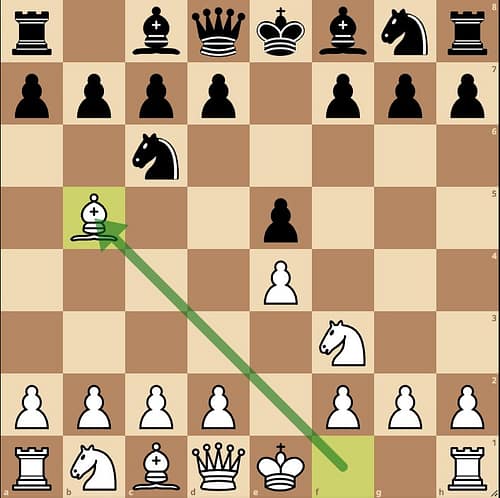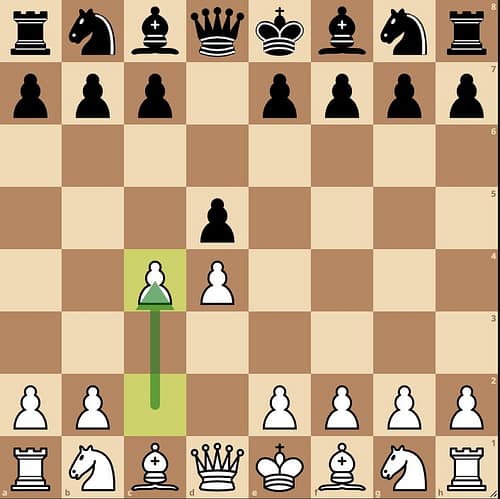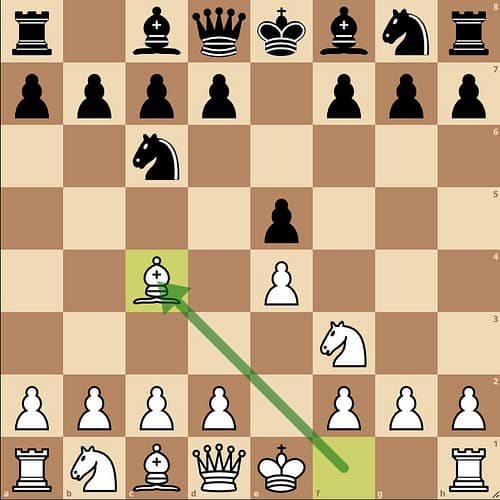Best chess openings for White: Grandmaster’s opinion
What are the best chess openings for white? This is a question on the minds of many novice chess players. Indeed, there is a vast array of different systems, but which ones are the most reliable and suitable for beginners? In this article, I attempt to give an answer to this question. In this article, I provided a brief overview of the best chess openings for white. These are the most reliable options that I recommend to my students who are at the beginner or amateur level.
Scotch Game
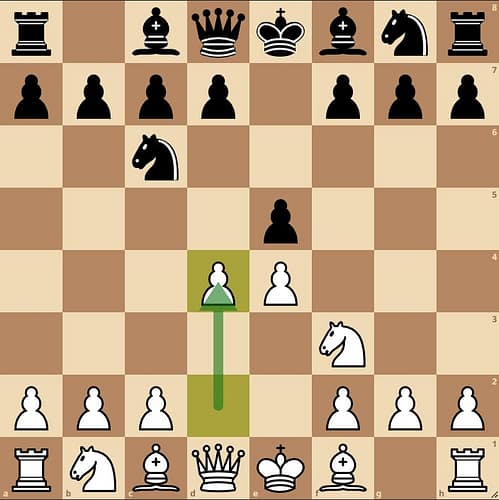
The Scotch Game belongs to the category of open openings and begins as follows: 1.e4 e5 2.Nf3 Nc6 3.d4 exd4 4.Nxd4. This is a serious opening with a strong positional foundation. It has been employed in practice by top chess players for almost two centuries.
The ideology of the Scotch Game is as follows: White “liquidates” the e5 pawn, which hinders the struggle for the center. After the exchange of pawns on d4, White gains an advantage in space, opens diagonals for the bishops, and can conveniently place their pieces.
In this case, the loss of tempo (two moves by the knight) is compensated by tangible positional advantages: spatial superiority and dominance in the center. Today, the Scotch Opening is a respected opening in the repertoire of many “big” players.
The most popular continuations are 4…Nf6 and 4…Nc6. In the vast majority of cases, Black plays one of these moves. Other moves are encountered much less frequently.
Ruy Lopez
The history of the Ruy Lopez Opening dates back several centuries. As early as 1561, the Spanish priest Ruy López explored and systematized the variations resulting from the move 3.Bb5, which led to the naming of this opening.
The main goal for White in the Ruy Lopez is to hinder the free development of Black’s pieces, preventing them from occupying comfortable positions. This allows White to seize the initiative, forcing Black to respond to threats.
With the move 3.Bb5, White increases pressure on the e5 square. Black must constantly consider the possibility of …c6 and capturing the pawn on e5. However, this doesn’t mean White will capture immediately. For example, after 3…a6 4.Bxe5, Black has good play with …Qd4.
The Ruy Lopez is one of the most thoroughly studied openings. Extensive research and books have been written on the most popular variations. Today, let’s review the main possibilities for both White and Black.
The Ruy Lopez chess Opening for white belongs to the category of open openings and arises on the board after the moves 1.e4 e5 2.Nf3 Nc6 3.Bb5. The earliest interpretation of the setup pursued the simple idea of creating a threat to the e5 pawn, but as the opening evolved, its conceptual content expanded, becoming significantly more complex and profound by today’s standards. Typically, the attack on the knight with the promise of capturing the pawn is just the prelude to the long-term struggle for initiative in the center.
In modern chess, the Ruy Lopez chess Opening stands as the most popular opening for white among open beginnings, offering an extensive range of opportunities for substantive play for both White and Black, reflected in numerous theory-developed variations. The most significant and meaningful theses are succinctly reflected in the overview material provided below.
Queen’s Gambit
The Queen’s Gambit is an opening that occurs on the board after the moves 1.d4 d5 2.c4. It is one of the main closed openings and the most popular response by White to 1…d5. In most cases, the game takes on a deeply positional character.
Exercising the right of the first move, White occupies one of the central squares on the board with 1.d4. The symmetrical response 1…d5 by Black prevents White from seizing the center with 2.e4. The idea of developing similarly to open openings and playing 2.Nc3 appears passive, as the pawn on d5 is defended by the queen, and White does not create threats in this way. Moreover, relying on 3.e4 is unnecessary if Black plays 2…Nf6. Therefore, 2.c4 is chosen, undermining the d5 point. After White advances the “c” pawn, the knight’s development to c3 with pressure on the central squares becomes much more justified. It is worth noting that after 2…dxc4, the immediate 3.e4, while initially seeming good, is refuted by Black’s argument. But more on that later.
The Queen’s Gambit is a classic opening where the fight for the center begins from the first moves. Virtually all the strongest chess players in the world have either played or play the Queen’s Gambit. This opening has stood the test of centuries at the highest level. It is hard to find even one strong chess player who has not played the Queen’s Gambit. The Queen’s Gambit is very popular among modern chess players and is one of the best chess openings for white after 1.d4.
The London System
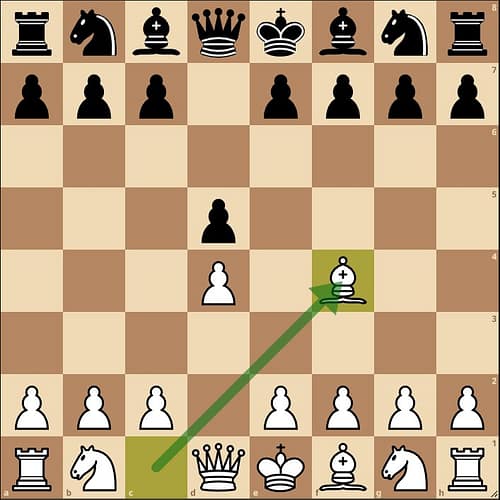
The London System is not quite an ordinary opening. The setup, referred to as the London System, can be applied practically to any of Black’s responses to 1.d4. It is more of a group of variations united by common ideas:
Development of the dark-squared bishop to f4. Central pawn structure. White does not try to conquer space in the center but instead builds a solid pawn structure with pawns on c3, d4, and e3. Such a flexible structure allows for activity on both flanks and is quite good for the endgame. Historically, the group of variations unified by these features and named the London System has the following main branches.
Playing the London System has several advantages.
Firstly, it’s a good and solid chess opening for white. White quickly develops pieces and fights for the center. It’s not easy to face if you’re playing as Black – you’ll need to act very purposefully and without errors. After all, White sets the pace, and the game can lead to a long strategic battle.
However, this isn’t the only option for White. The system has its peculiarities, and White can choose different setups to try to achieve victory. If you’re looking for variety, it’s also available in the London System. Today you can play a positional game, and the next day surprise your opponent with a sharper line.
Another undeniable advantage of the London System, and probably the reason why so many club players have decided to include it in their repertoire, is that the amount of theory you need to know is minimal. This opening can mostly be played with ideas, and move order is almost irrelevant. Players can focus on studying chess and improving their overall understanding rather than on learning a huge amount of theory.
The Italian Game
The Italian Game is an open chess opening that starts with the moves:
1. e4 e5
2. Nf3 Nc6
3. Bc4 Nc5.
It’s one of the oldest openings. Typically, White tries to create a strong pawn center and pressure on the f7 square. In ancient times, it was unknown how to withstand White’s pressure, but now the solution has been found — 4… Nf6. The first analytical works by Italian masters on this opening appeared as early as the 16th century. Hence the name. The translation from Italian, Giuoco Piano, means “quiet game.” In reality, only about half of the Italian Game variations can be considered quiet. Those in which White avoids active fighting for the center. Variations with moves like 4. c3 — 5. d4 and especially the Evans Gambit, I wouldn’t risk calling “quiet.” Quite the opposite. The main ideas of the Italian Game are quite simple and understandable. That’s why this opening is recommended for beginners. White aims with the bishop on c4 at the vulnerable point f7, considering in some variations the move Ng5. At the same time, White conveniently places the pieces and has the opportunity to form a strong center. It should be noted that if Black chooses a move other than 3… Nc5, different openings may arise. For example, with 3… Nf6, the Two Knights Defense.



